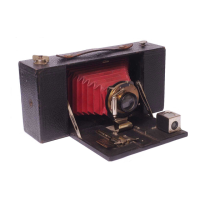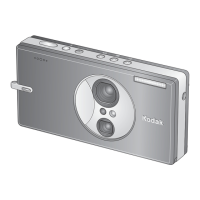N0.
I
N0.
?
NO.3
N0.4
CoPYRTcHT
1922
By
EASTMAN KoDAK
CoMpANy
stop
openings
and
differ.
These eircles
show the actual
sizes of the
dia-
phragm
or stop
openings
of the
shutter used on
the
Vest Pocket
Kodak,
Model
B,
with Single
Lens.Theyclear-
ly
shor,v the rela-
tive sizes of
the
how their
areas
o
o
o
Diaphragm
or
Stop
Openings
The
diaphragms,
or stops as
they
are sometimes
called,
are the openings
that regulate
the amount
of light
pass-
ilg
through
the lens.
The
openings are
changed
by revolving
the milled
dial B,
see
page
11.
No. l-For
all
ordi.nary
outdoor
pic-
fzres, such
as nearby landscapes
show-
ing
little
or
no
sky,
groups
and street
scenes, when
the subject is in
the
bright
sunlight,
with the
shutter adjusted for
instantaneous
exposures.
For Interior
Time
Exposures,
see table
on
pages
31
and 32.
No. 2-For
open
views,
when the
sunlight on
the subject is
unusually
bright, and there are no heavy
shadows,
such as
views
at
the seashore and on
the
water, with the shutter adjusted for
an
instantaneous
exposure. For
In-
terior Time Exposures, the
time for
which
is
given
in
the table on
pages
31
and 32.
No. 3-For instantaneous
exposures
of
extremely
distant
views,
marines,
snow scenes and clouds, in
bright sun-
Iight.
For
Interior Time Exposures,
see table on
pages
31 and 32, and for
Time Exposures
Outdoors on
cloudv
days.
The exposures
required for
Time
Exposures
Outdoors are
given
in
the
table
on
page
35.
No. 4-For Interior Time Exposures.
also
for Time Exposures
Outdoors ori
cloudy days.
Neuer
for
i,nstantaneous
efr'posuTes,
The
smaller the stop opening
the
sharper the nearby
objects will be, see
table
on
page
15.
If stops No.
3
and
No.
4
are used for
ordinary
instantaneous
exposurcs,
fail-
ure
will result.
Throughout
this
manual
all expo-
sures
given
for
outdoor subjects are for
the hours
from
two
and a half hours
after sunrise
until two and a half hours
before
sunset.
If earlier
or
later,
the
exposures
must
be longer.
1
I
.1

